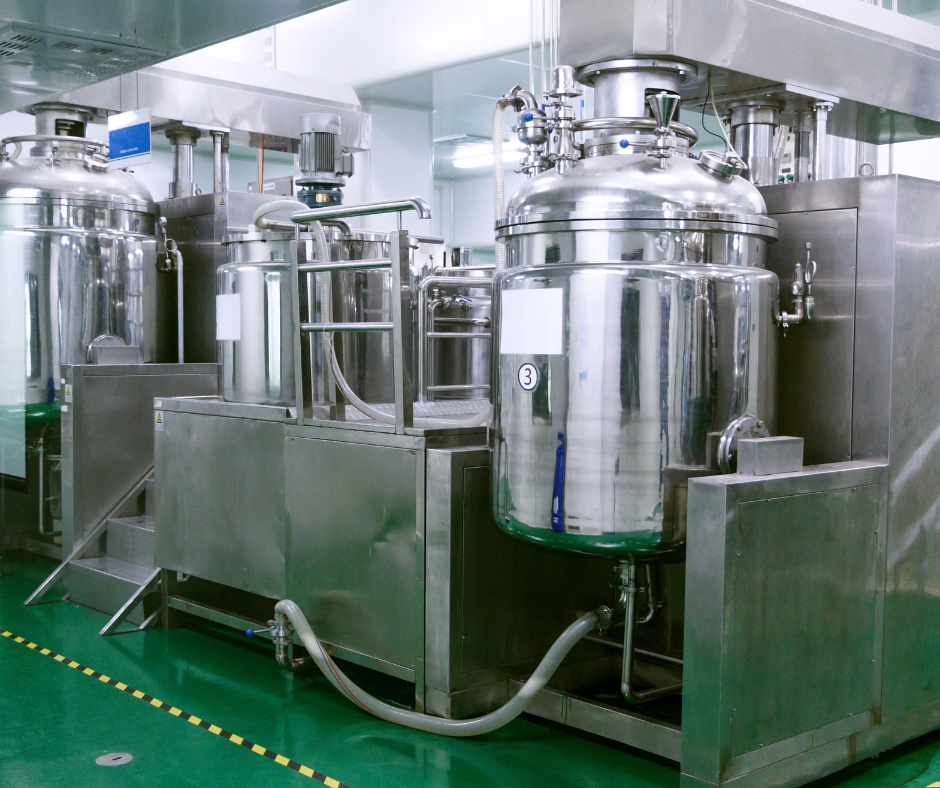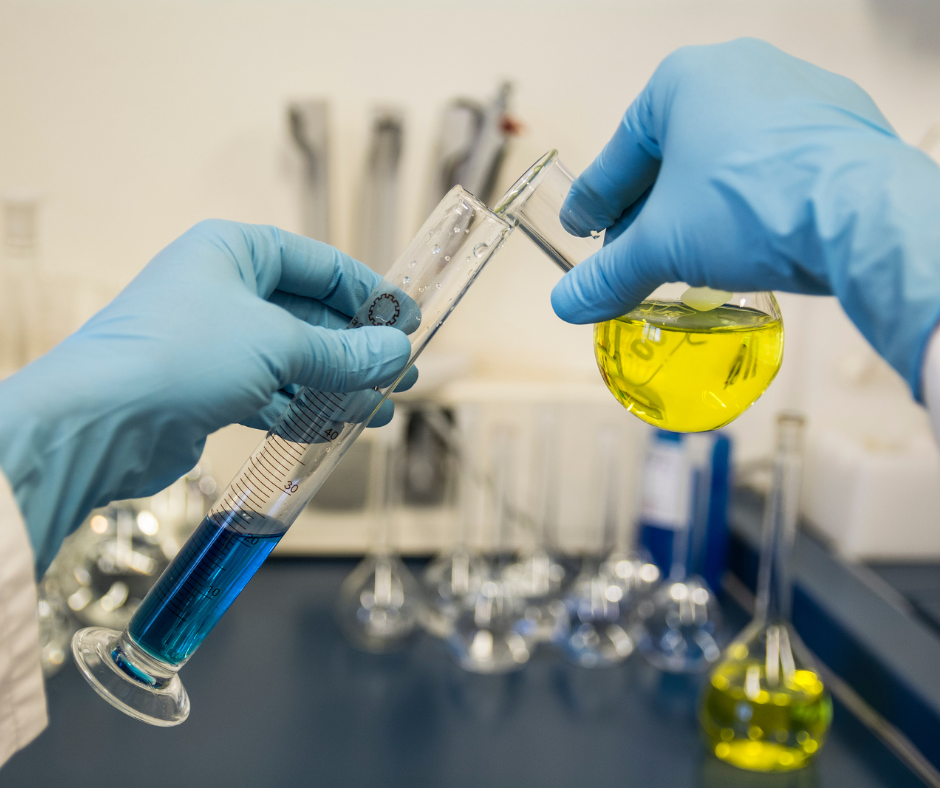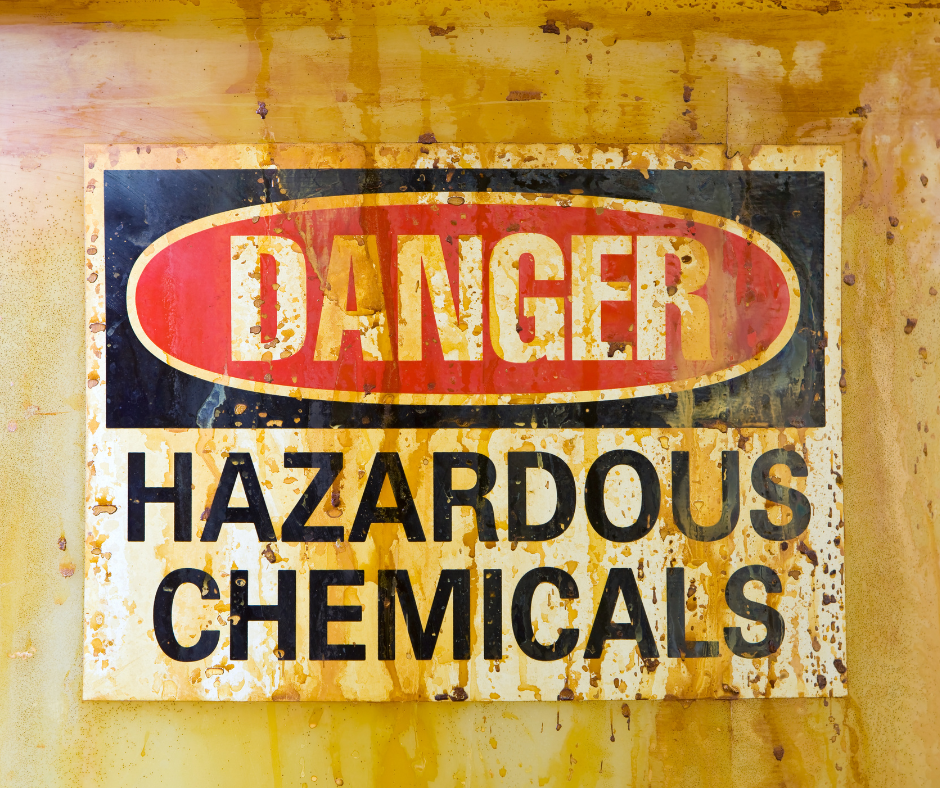Pest control chemical manufacturers must comply with a variety of regulatory requirements, both at the federal and state levels. These regulations and guidelines are designed to protect human health and the environment by ensuring that pesticides are safe and effective when used as directed, and that they do not harm non-target species or the environment.
One of the most important regulatory bodies is the Environmental Protection Agency (EPA), which sets regulations and guidelines for the development, production, labeling, and distribution of pest control chemicals.
In order to comply with EPA regulations, manufacturers must adhere to several key requirements:
- Registration
- Labeling
- Reporting
- Good Manufacturing Practices (GMPs)
- Record-Keeping
- How can Deskera Help You?
- Key Takeaways
- Related Articles
Registration
The registration process is a critical component of EPA regulation for pest control chemical manufacturers. Before a pesticide can be sold or distributed in the United States, it must be registered with the EPA. The registration process is designed to ensure that pesticides are safe and effective when used according to label instructions and that they do not cause unreasonable adverse effects on human health or the environment.
The registration process can be complex and time-consuming, requiring significant resources and expertise. To register a pesticide, the manufacturer must submit extensive data and information to the EPA, including data on the product's chemical composition, efficacy, toxicity, environmental fate, and potential risks to human health and the environment. This data must be generated through laboratory studies, field trials, and other scientific methods.
The EPA reviews this data to evaluate the safety and efficacy of the pesticide and to determine whether it should be registered for use. The registration process includes a thorough scientific review and evaluation, as well as an opportunity for public comment and input. Once a pesticide is registered, the EPA continues to monitor its safety and effectiveness, and the manufacturer must submit regular reports and updates to the EPA to ensure ongoing compliance.
In addition to the registration process, the EPA also maintains a list of active ingredients and products that are banned or restricted in the United States due to health or environmental concerns. Manufacturers must ensure that their products do not contain any banned or restricted ingredients and comply with any restrictions or limitations on their use.
Overall, registration is a critical step in the regulatory process for pest control chemical manufacturers. It ensures that products are safe and effective when used according to label instructions and that they do not cause unreasonable adverse effects on human health or the environment. By adhering to the registration process, manufacturers can ensure the safety and effectiveness of their products and comply with EPA regulations.
Labeling
Labeling is another critical component of EPA regulation for pest control chemical manufacturers. The label is the primary means of communication between the manufacturer, the user, and the EPA, providing essential information on how to use the product safely and effectively.
The EPA has strict labeling requirements that must be followed by all pesticide manufacturers. The label must include specific information, such as the product name, the name and address of the manufacturer, the active ingredients, the product's intended use, and directions for use. The label must also include precautionary statements, such as first aid measures and environmental hazards, and information on storage and disposal.
The EPA reviews and approves all pesticide labels before they can be used in the marketplace. The agency ensures that labels are accurate, clear, and complete and that they provide users with the information needed to use the product safely and effectively.
Manufacturers must also comply with EPA requirements for product packaging. Pesticides must be packaged in a way that minimizes the risk of spills, leaks, or other accidents during transportation, storage, and use. The packaging must be sturdy and tamper-resistant and must include labeling and warning statements.
In addition to EPA requirements, manufacturers must also comply with labeling requirements established by other federal agencies, such as the Occupational Safety and Health Administration (OSHA) and the Department of Transportation (DOT), as well as state and local regulations.
Overall, labeling is a critical aspect of EPA regulation for pest control chemical manufacturers. By providing accurate and complete information on product labels, manufacturers can ensure that their products are used safely and effectively and comply with EPA requirements.
Reporting
Reporting is another critical regulatory requirement for pest control chemical manufacturers. The EPA requires manufacturers to submit data and information on their products to the agency to ensure that they meet safety and environmental standards.
The EPA requires manufacturers to report data on the composition of their products, including active and inert ingredients, as well as any impurities or contaminants that may be present. Manufacturers must also submit data on the physical and chemical properties of their products, including toxicity and environmental impact.
In addition to product data, manufacturers must also report on their manufacturing processes, including any waste or emissions generated during production. They must also submit data on the transportation, storage, and disposal of their products, including any risks or hazards associated with these activities.
Manufacturers must submit this data to the EPA before their products can be registered and sold in the marketplace. The EPA reviews the data to ensure that products meet safety and environmental standards and may require manufacturers to make changes to their products or manufacturing processes to comply with regulations.
Manufacturers must also report any adverse effects associated with their products, such as illness or injury resulting from exposure to pesticides. The EPA requires manufacturers to maintain records of these incidents and report them to the agency.
Overall, reporting is a critical aspect of EPA regulation for pest control chemical manufacturers. By submitting data and information on their products to the agency, manufacturers can ensure that their products meet safety and environmental standards and comply with EPA regulations. Reporting also enables the agency to monitor the safety and effectiveness of pesticide products and take action if necessary to protect public health and the environment.
Good Manufacturing Practices (GMPs)
Good Manufacturing Practices (GMPs) are a set of guidelines that outline the best practices for manufacturing pest control chemicals. GMPs are designed to ensure that products are consistently produced and controlled according to established quality standards, and that they are safe for human use and the environment.
GMPs cover a wide range of manufacturing practices, from raw materials sourcing and handling to finished product testing and storage. Some key elements of GMPs for pest control chemical manufacturers include:
- Facilities: Pest control chemical manufacturers must maintain clean and sanitary facilities designed to prevent product contamination.
- Equipment: All equipment used in the manufacturing process must be appropriately maintained and calibrated to ensure accurate measurements and consistent quality.
- Materials: All materials used in the manufacturing process must be of high quality and sourced from reputable suppliers. Manufacturers must also ensure that raw materials are properly labeled, stored, and handled to prevent contamination.
- Manufacturing processes: Pest control chemical manufacturers must follow established manufacturing, testing, and quality control procedures to ensure that products are consistently produced to meet established standards.
- Documentation: Manufacturers must maintain detailed records of all manufacturing processes, including raw material and finished product testing results, to ensure quality and consistency.
- Personnel: Manufacturers must train their personnel to follow GMPs and maintain a culture of quality throughout the organization.
By following GMPs, pest control chemical manufacturers can ensure that their products meet established quality standards and are safe for human use and the environment. Compliance with GMPs is also a key requirement for EPA registration of pest control chemicals, and failure to comply can result in enforcement actions by the agency.
Record-Keeping
Record-keeping is an essential element of regulatory compliance for pest control chemical manufacturers. EPA regulations require manufacturers to maintain detailed records of their manufacturing processes, from raw material sourcing and testing to finished product distribution and adverse event reporting.
Some key elements of record-keeping for pest control chemical manufacturers include:
- Raw material records: Manufacturers must maintain records of all raw materials used in the manufacturing process, including the source of the materials, lot numbers, and testing results.
- Manufacturing records: Manufacturers must maintain detailed records of all manufacturing processes, including batch records, testing results, and equipment maintenance records.
- Finished product records: Manufacturers must maintain records of all finished products, including lot numbers, distribution records, and any adverse event reports.
- Adverse event reporting: Manufacturers are required to report any adverse events related to their products to the EPA, and must maintain records of all adverse event reports.
- Record retention: Manufacturers must retain all records related to their products for a minimum of three years.
By maintaining detailed and accurate records, pest control chemical manufacturers can ensure compliance with EPA regulations, and demonstrate their commitment to producing safe and effective products. Good record-keeping practices also help manufacturers identify and address quality issues, and can be a valuable tool in continuous improvement efforts.
How can Deskera Help You?
Deskera's integrated financial planning tools allow investors to better plan their investments and track their progress. It can help investors make decisions faster and more accurately.
Deskera Books can assist you in automating your accounting and mitigating business risks. Deskera makes it easier to create invoices by automating many other procedures, reducing your team's administrative workload.
Deskera also offers a suite of integrated applications to help businesses manage their financials, inventory, and operations. Furthermore, other business aspects such as HR (Deskera People), CRM (Deskera CRM), and ERP are provided by Deskera. These could be crucial and can help short sellers keep track of their businesses and make better decisions.
Key Takeaways
- Pest control chemical manufacturers are subject to a range of regulatory requirements aimed at ensuring the safety and efficacy of their products.
- Key regulatory requirements include product registration, labeling, reporting, good manufacturing practices, and record-keeping.
- Product registration requires extensive testing and evaluation and can take several years to complete.
- Labeling requirements provide critical information on proper use, handling, safety precautions, and first aid measures.
- Reporting requirements include adverse event reporting and regular reports on product usage and distribution.
- Good manufacturing practices ensure pest control chemicals are produced in a safe and consistent manner.
- Record-keeping is essential for maintaining compliance and includes detailed documentation of the manufacturing process from raw materials to distribution and adverse event reporting.
- Complying with regulatory requirements is critical for ensuring product safety and efficacy, building trust with regulatory agencies and the public, and driving business success.
Related Articles










